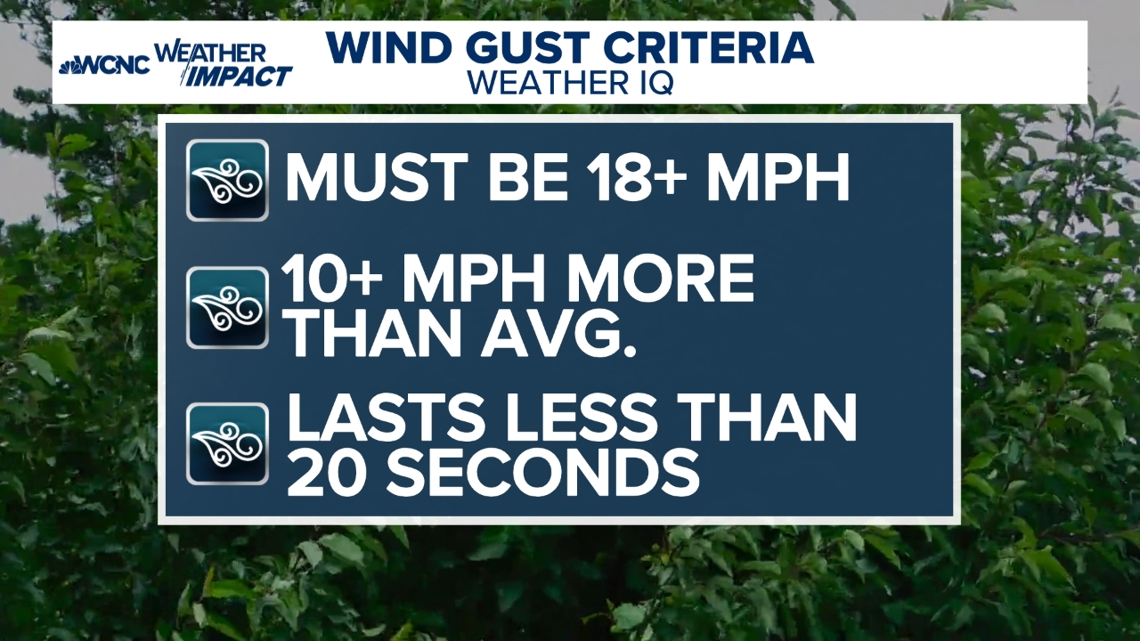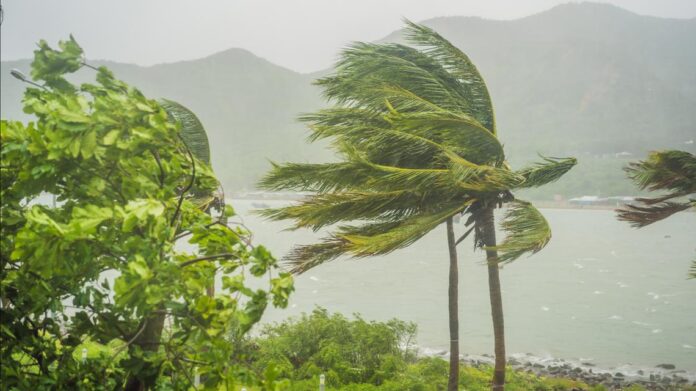You hear terms like windy and breezy used all of the time, but is there a difference. Well each wind term actually has a technical wind range that accompanies it.
CHARLOTTE, N.C. — When the Weather Impact Team is up at the green screen talking about the forecast, they use a lot of weather jargon. Especially when it comes to wind. Let’s bust out the weather dictionary and raise your Windy Weather IQ.
Let’s start with windy and breezy. These two common weather words match with actual wind speeds.
According to NOAA’s Weather Glossary, breezy means winds sustained at 15-25 mph. Windy overlaps slightly with sustained winds will be 20-30 mph. It is VERY WINDY at 30-40 mph. Any wind sustained over 40 mph is considered a high or strong wind.
The keyword for these terms is sustained, which means the average wind speed over two minutes.
Wind gusts are a sudden brief increase in wind that last less than 20 seconds. So when it’s gusty, it means there are a lot of fluctuations in the wind for the day.


Blustery is another term meteorologists use. This has the same definition as breezy: winds at 15-25 mph, but this term is used more commonly during the colder months to describe the chilliness of the wind.
Quick little reminder: The wind direction given is the direction from which the wind blows. So this arrow may be pointing to the southeast but that means winds are blowing from the northwest (which indicates a colder wind or to use the term just mentioned blustery).
What about gale-force winds? This is more of a nautical term but a technical gale means winds at 39-46 mph. Winds at 47 to 54 mph is a severe gale.
Terms like gale originate from the Beaufort Wind Scale.
This estimates wind speeds and their effects. The Beaufort Wind Scale was created by Admiral Sir Francis Beaufort in the early 1800s to help sailors estimate the winds via what they see. This 0-12 scale ranging from calm to hurricane force is still used in the modern day to estimate wind strengths. Here are the 12 levels below.
- Zero: Calm – Smoke rises vertically
- 1: 1-3 mph (Light Air) – Barely moving
- 2: 4-7 mph (Light Breeze) – Wind can be felt on your face/skin and leaves rustle
- 3: 8-12 mph (Gently Breeze) – Leaves and small twigs constantly moving, light flags extended.
- 4: 13-18 mph (Moderate Breeze) – Small branches are moving. Dust and loose paper raised.
- 5: 19-24 mph (Fresh Breeze) – Branches of a moderate size move. Small trees and leaves begin to sway. Surface waves increase.
- 6: 25-31 mph (Strong Breeze) – Large branches in motion. Whistling is heard in overhead wires. Umbrella use becomes difficult. Empty plastic bins tip over. Some sea surface spray is possible. Larger waves begin to form.
- 7: 32-38 mph (Near Gale) – Whole trees in motion. Effort is needed to walk against the wind. Moderate sea mist. Also known as ‘moderate gale’.
- 8: 39-46 mph (Gale) – Some twigs broken from trees. Cars veer on the road. Progress on foot is seriously impeded. Long streaks of foam form on the ocean. Some refer to this as a ‘fresh gale’
- 9: 47-54 mph (Severe Gale) – Some branches break off trees, and some small trees blow over. Construction/temporary signs and barricades blow over. Slight structural damage starts occurring at this time. Also known as ‘strong gale’.
- 10: 55-63 mph (Storm Force) – Trees are broken off or uprooted, saplings bent and deformed. Poorly attached asphalt shingles and shingles in poor condition peel-off roofs. The ocean takes on a white appearance with very high waves.
- 11: 64-73 mph (Violent Storm) – Widespread damage to vegetation. Many roofing surfaces are damaged; asphalt tiles that have curled up and/or fractured due to age may break away completely.
- 12: 74+ mph (Hurricane) – At this point, the Saffir-Simpson Scale takes over.



